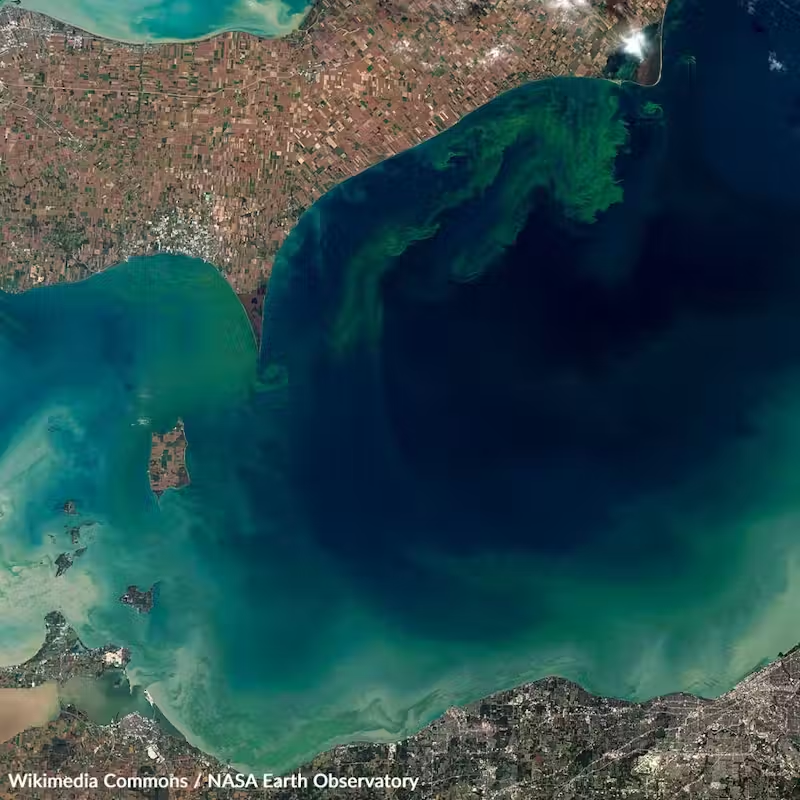Pledge to Prevent Toxic Algae Blooms
4,826 signatures toward our 30,000 Goal
Sponsor: The Rainforest Site
These blooms claim the lives of hundreds of marine mammals, and raise concerns about the health of our marine ecosystems. Take action now!

The surge of toxic algae blooms in our waters is causing widespread devastation, threatening the delicate balance of Southern California's marine ecosystems. Hundreds of marine mammals have been killed as a result, while countless others suffer from the harmful effects of these blooms1. The urgency of this situation demands immediate action.
Understanding the Threat of Toxic Algae Blooms
Toxic algae blooms, also known as harmful algal blooms (HABs), occur when certain algae species rapidly reproduce, creating dense concentrations in our waterways2. Excessive nutrient pollution, primarily from nitrogen and phosphorus runoff, fuels the growth of these blooms3. Warmer temperatures and calm conditions exacerbate their proliferation2. The consequences are dire.
Risks to Wildlife and the Environment
Toxic algae blooms pose a significant threat to our marine life and the wider ecosystem. These blooms release toxins such as microcystins4 and saxitoxins5, which are harmful to both humans and wildlife. Marine mammals, fish, birds, and shellfish are particularly vulnerable, experiencing mass mortalities and severe illnesses. Ingesting these toxins can cause neurological damage, organ failure, and even death. Furthermore, the blooms deplete oxygen levels in the water, suffocating fish and other aquatic organisms, disrupting entire food chains and harming biodiversity6.
Prevalence and Vulnerable Areas
While Southern California has been severely impacted, toxic algae blooms are a global issue, affecting both coastal and freshwater environments. Certain regions are more susceptible due to specific environmental conditions. Here are a few notable areas:
- Gulf of Mexico: The coastlines of Florida and Texas experience recurrent blooms of red tide caused by Karenia brevis, leading to marine life and human health concerns7.
- Lake Erie: Annual blooms of cyanobacteria fueled by nutrient runoff from agriculture have impacted Lake Erie, endangering fish populations and water quality8.
- Chesapeake Bay: Nutrient pollution has triggered harmful algal blooms, contributing to the formation of "dead zones" with critically low oxygen levels9.
- Coastal California: Southern California's coastal areas have witnessed harmful blooms of Pseudo-nitzschia algae, resulting in high levels of domoic acid and harming marine mammals and seabirds10.
Join the Movement: Take Action
We cannot stand idle while our marine ecosystems suffer. Together, we can make a difference and reduce the risk of toxic algae blooms.
Act now and be the change our waters desperately need. Take the pledge to protect our waters, wildlife, and future generations.
- U.S. Department of Commerce, National Oceanographic and Atmospheric Administration, "What is a harmful algal bloom?."
- National Ocean Service, National Oceanographic and Atmospheric Administration, "Harmful Algal Blooms."
- National Ocean Service, National Oceanographic and Atmospheric Administration, "What is nutrient pollution?"
- United States Environmental Protection Agency (29 March 2023), "Indicators: Algal Toxins (microcystin)."
- Science Direct, Encyclopedia of Food Microbiology (Second Edition) (2014), "Saxitoxin."
- United States Environmental Protection Agency (20 June 2023), "The Effects: Dead Zones and Harmful Algal Blooms."
- National Ocean Service, National Oceanographic and Atmospheric Administration, "Gulf of Mexico/Florida: Harmful Algal Blooms."
- Alliance for the Great Lakes (2023), "Lake Erie Algae Blooms."
- University of Maryland Center for Environmental Science (11 May 2015), "Harmful algal blooms in the Chesapeake Bay are becoming more frequent."
- Southern California Coastal Water Research Project (2023), "Harmful Algal Blooms."
The Pledge:
I pledge to take action to prevent the occurrence of toxic algae blooms and protect our precious wildlife and environment. I understand the significant threat that these blooms pose to our marine ecosystems and the urgent need for collective efforts to mitigate their impact.
By committing to the following actions, I will play my part in reducing the risk of toxic algae blooms:
- Reduce Nutrient Runoff: I will adopt responsible gardening practices, such as using organic fertilizers and minimizing pesticide use, to prevent excess nutrients from entering waterways.
- Proper Waste Disposal: I will dispose of pet waste, yard waste, and hazardous materials in designated areas to prevent nutrient-rich runoff from reaching our water bodies.
- Responsible Fertilizer Use: I will follow recommended fertilizer application rates and schedules, avoiding overuse that can contribute to nutrient pollution in our water systems.
- Support Sustainable Agriculture: I will choose locally sourced, sustainably grown produce, supporting farming practices that minimize nutrient runoff.
- Conservation-Oriented Landscaping: I will design my landscaping to include rain gardens, native plants, and permeable surfaces, which help filter and absorb excess nutrients.
- Efficient Water Use: I will practice water conservation measures, such as using drip irrigation systems and capturing rainwater, to reduce the amount of runoff entering water bodies.
- Limit Chemical Use: I will minimize the use of chemicals, including pesticides and herbicides, in my household and encourage alternative, eco-friendly methods of pest control.
- Proper Septic System Maintenance: If I have a septic system, I will have it regularly inspected and maintained to prevent nutrient leakage into groundwater and nearby water bodies.
- Support Environmental Regulations: I will advocate for and support policies and regulations aimed at reducing nutrient pollution and protecting our water resources.
- Educate Others: I will raise awareness among my friends, family, and community about the causes and consequences of toxic algae blooms, encouraging them to join the effort.
By pledging to undertake these actions, we can collectively reduce the risk of toxic algae blooms, safeguard our wildlife, and ensure a healthier future for all. Let us unite in our commitment to protect our water resources and preserve the beauty and vitality of our marine ecosystems. Together, we can make a lasting difference for generations to come.
Pledged by,